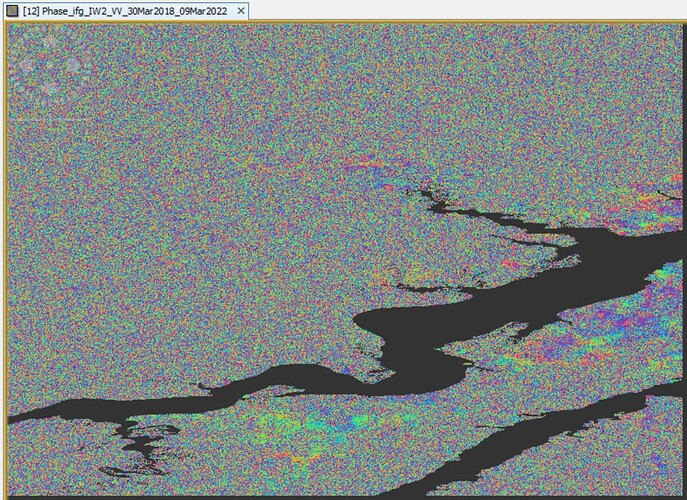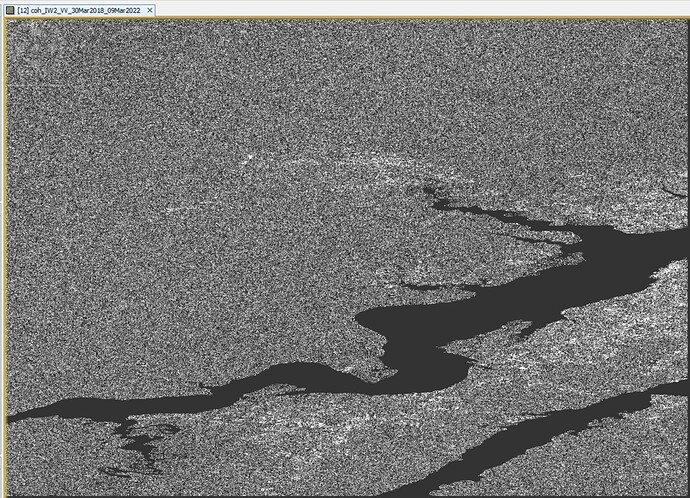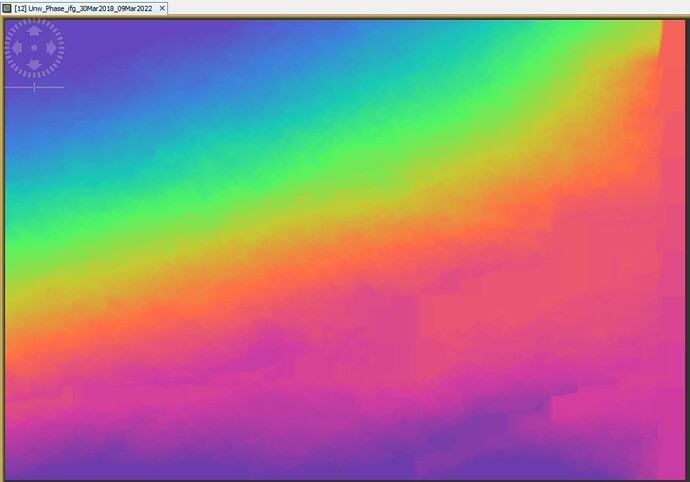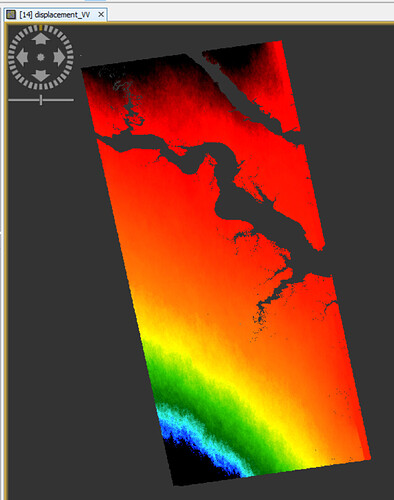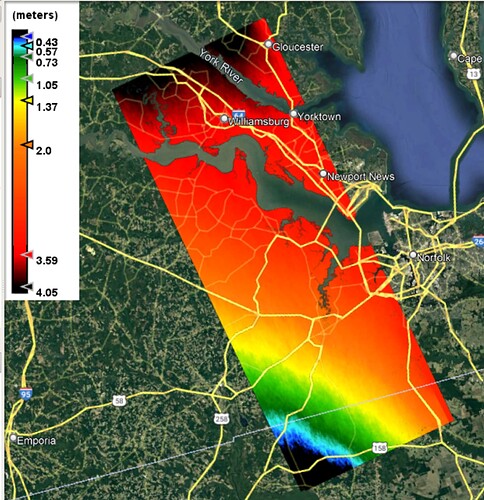Hello all,
I basically followed “TOPS Interferometry Tutorial” by Braun and Veci (2021) @ABraun to generate a surface displacement from a single image pair of SLC radar data.
Basic steps goes as follows:
- Download SLC pair
- Coast of MD, from March 2018 to March 2022
- S1A_IW_SLC__1SDV_20180330T230608_20180330T230635_021251_0248CE_9238.SAFE
- S1A_IW_SLC__1SDV_20220309T230632_20220309T230659_042251_05092C_E3C2.SAFE
- Coregistration
- S1 TOPS Split
- Apply Orbit File
- S-1 Back Geocoding
- Interferogram Formation
- TOPS Deburst
- Goldstein Phase Filtering
- Subset
- Phase Unwrapping
- Phase Displacement
- Terrain Correction
- Export
Eveyrthing worked out well without error, but the end result is just not right.
Warpped Phase and Coherence looks fine (i think) but the Unwarpped Phase has a weird gradient pattern.
Phase
Coherence
Unwrapped Phase
At the end, the displacement_vv also follows this gradient pattern. As well as KMZ on Google Earth.
I was expecting more like few cm change over specific areas, but 2m change over the entire area just don’t seem right.
Anyone have any idea what might happned?
What can I try to resolve this issue?
Please let me know if any additional information or screenshot will help.
The coherence is essentially zero everywhere except around some bright scatterers. Unwrapping noise can lead into strange results.
1 Like
The time interval is too large. Try shorter ones with SBAS strategy and make time series.
1 Like
What is ideal time interval?
Could you roughly suggest for InSAR processing?
For example, is 1 month interval too short? Or is 2 year interval too long?
I see that coh is quite empty. What do you think this might have resulted from? Or is there any other paramters that I should play around with? what about additional operations?
As stated above that is due to temporal decorrelation due to the long time interval. Try 6 or 12 days for best coherence and to learn about the process in general.
1 Like
Sorry for the noob question. So if I want to get 4 years worth of displacement change, I basically need to compare 12 day interval for the entire 4 years. Which is about 365*4 / 12 = 122 computations. And therefore, I should use the automated batch processing instead of running the process 122 times manaully.
Is there any good/complete tutorial on this?
Yes, you are right you need to compute all possible combinations with 6 or 12 or 24 or 36 days keeping the perp. baseline as short as possible. IMH perp. baseline larger than 50 m should be neglected. In some very limited cases, such as deserts or high mountain areas, one could try with periods of 3-6 months, but one year is too large to be confident.
Larger time intervals will introduce more temporal decorrelation.
2 Likes
